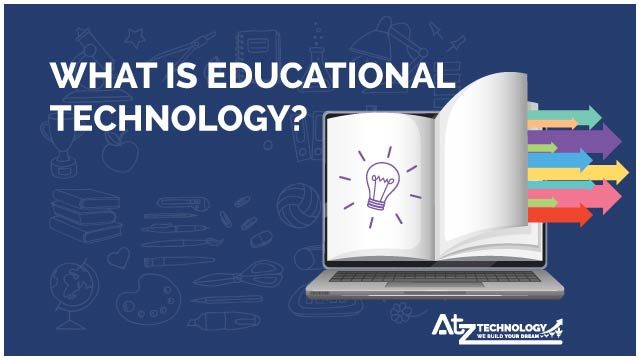The Olympic Games have long been a symbol of global unity, athletic excellence, and cultural celebration. Since their ancient inception in Greece, the Games have evolved into a massive international event, showcasing the pinnacle of human physical achievement and fostering a spirit of friendly competition. As we look forward to Paris 2024, the anticipation and…
10 importance of educational technology.
Educational technology, often referred to as EdTech, encompasses a range of tools and resources used to enhance teaching and learning processes. From interactive software and online courses to digital classrooms and learning management systems, EdTech has become a cornerstone of modern education.
Here are ten key reasons why educational technology is crucial in today’s educational landscape
1. Enhanced Engagement and Motivation in Learning Through Educational Technology
Educational technology plays a crucial role in enhancing student engagement and motivation. Traditional teaching methods can often seem monotonous and fail to capture the interest of all students. However, EdTech introduces interactive and multimedia-rich content that makes learning more dynamic and enjoyable.
Multimedia Presentations and Interactive Tools: By incorporating videos, animations, and interactive simulations, educators can present complex concepts in a more understandable and engaging manner. These tools cater to various learning styles, ensuring that visual, auditory, and kinesthetic learners all benefit.
Gamified Learning Platforms: Gamification elements, such as points, badges, and leaderboards, turn learning into an exciting challenge. This approach not only makes education fun but also encourages healthy competition and a sense of achievement among students.
Virtual Reality (VR) and Augmented Reality (AR): VR and AR technologies create immersive learning experiences. For instance, students can take virtual field trips to historical sites, explore the human body in 3D, or conduct virtual science experiments. These experiences are far more engaging than reading from a textbook.

10 importance of educational technology.
2. Personalized Learning with Educational Technology
Personalized learning is one of the most significant advantages of educational technology. It allows educators to tailor educational experiences to meet the unique needs of each student, thereby improving learning outcomes.
Adaptive Learning Technologies: These technologies use algorithms to analyze a student’s performance in real time and adjust the content and difficulty level accordingly. This ensures that students are neither bored by content that is too easy nor overwhelmed by content that is too difficult.
Individualized Learning Plans: EdTech enables the creation of customized learning plans for each student. Teachers can use data from educational software to identify areas where a student needs more practice and provide targeted interventions.
Self-Paced Learning: Online courses and digital resources allow students to learn at their own pace. This is particularly beneficial for students who need more time to grasp certain concepts or for those who are advanced and need more challenging material.
3. Accessibility and Inclusivity Through Educational Technology
Educational technology significantly improves accessibility and inclusivity, ensuring that all students have the opportunity to learn, regardless of their physical location or abilities.
Assistive Technologies: Tools such as screen readers, speech-to-text software, and alternative input devices help students with disabilities access educational content. For example, students with visual impairments can use screen readers to listen to digital text, while those with mobility issues can use alternative input devices to navigate educational software.
Online Learning Platforms: These platforms allow students in remote or underserved areas to access quality education. With just an internet connection, students can participate in online courses, attend virtual classes, and access a wealth of educational resources.
Language Translation Tools: EdTech also includes language translation tools that help non-native speakers understand the content. This is particularly useful in diverse classrooms where students may speak multiple languages.

10 importance of educational technology.
4. Collaboration and Communication Enhanced by Educational Technology
Educational technology fosters better collaboration and communication among students and teachers, which is essential for a holistic learning experience.
Digital Collaboration Tools: Platforms like Google Classroom, Microsoft Teams, and Slack enable students to work together on projects, share resources, and provide feedback in real time, regardless of their physical location.
Virtual Classrooms: Tools like Zoom and Google Meet facilitate virtual classrooms, allowing teachers to conduct live sessions and interactive discussions. This is particularly useful for distance learning and hybrid classroom models.
Discussion Forums and Social Media: Online discussion forums and educational social media platforms provide spaces for students to ask questions, share ideas, and collaborate on assignments outside of traditional classroom hours.
5. Efficient Administration and Management with Educational Technology
EdTech streamlines administrative tasks, making the management of educational institutions more efficient and effective.
Learning Management Systems (LMS): Platforms like Moodle and Canvas help educators organize course materials, track student progress, and automate grading. This reduces the administrative burden on teachers and allows them to focus more on instruction.
Automated Attendance and Scheduling: Digital attendance systems and scheduling tools save time and reduce errors. Teachers can quickly take attendance using mobile apps, and administrators can efficiently manage class schedules and room bookings.
Data Management and Reporting: Educational technology enables the efficient collection, storage, and analysis of student data. This data can be used to generate reports, track academic performance, and identify trends, helping educators make informed decisions.

10 importance of educational technology.
6. Real-World Skills Development Through Educational Technology
Integrating technology into the classroom helps students develop essential skills needed in the modern workforce.
Digital Literacy: Students learn how to use various digital tools and platforms, which are crucial skills in almost every career today. They become proficient in using word processors, spreadsheets, presentation software, and other common applications.
Coding and Programming: Many schools now incorporate coding and programming into their curricula using platforms like Scratch, Code.org, and robotics kits. These skills are highly valuable in the technology-driven job market.
Critical Thinking and Problem-Solving: Educational technology often includes activities and projects that require students to think critically and solve problems. For instance, online simulations and coding exercises challenge students to find solutions and improve their logical reasoning abilities.
7. Cost-Effectiveness of Educational Technology
Educational technology can be a cost-effective solution for both educational institutions and students, making quality education more accessible.
Digital Textbooks and Open Educational Resources (OER): Digital textbooks are often cheaper than printed ones, and many high-quality educational resources are available for free online. This reduces the burden on students and schools.
Virtual Labs and Simulations: Instead of investing in expensive physical lab equipment, schools can use virtual labs and simulations to teach science and engineering concepts. These tools provide realistic, hands-on experiences without the associated costs.
Reduced Travel and Infrastructure Costs: Online learning reduces the need for physical classrooms and the associated costs of maintenance and utilities. Additionally, virtual classes eliminate the need for commuting, saving time and transportation expenses for both students and educators.

8. Immediate Feedback and Assessment in Educational Technology
One of the significant benefits of educational technology is the ability to provide immediate feedback and continuous assessment, which is crucial for effective learning.
Online Quizzes and Tests: Many educational platforms offer instant grading of quizzes and tests, providing students with immediate feedback on their performance. This helps students understand their mistakes and learn from them promptly.
Interactive Assignments: Digital assignments often include interactive elements that provide real-time feedback. For example, a math app might offer hints and explanations if a student gets an answer wrong, helping them understand the concept better.
Data-Driven Insights: Educational technology collects and analyzes data on student performance, allowing teachers to identify areas where students are struggling and provide targeted interventions. This continuous assessment helps ensure that students stay on track and achieve their learning goals.
9. Enhanced Teacher Professional Development with Educational Technology
Educational technology offers numerous opportunities for teachers to develop their skills and stay current with the latest educational trends.
Online Courses and Webinars: Teachers can participate in online courses and webinars to learn about new teaching strategies, technologies, and best practices. These professional development opportunities are often more flexible and accessible than traditional in-person training sessions.
Professional Learning Networks (PLNs): EdTech enables teachers to connect with peers and experts worldwide through PLNs. These networks provide platforms for sharing resources, collaborating on projects, and offering support and advice.
Access to Educational Resources: Teachers have access to a wealth of online resources, including lesson plans, instructional videos, and research articles. These resources help them enhance their teaching practices and stay informed about the latest developments in education.

10 importance of educational technology.
10. Sustainability and Environmental Impact of Educational Technology
Educational technology contributes to environmental sustainability by reducing the need for physical resources and promoting more efficient practices.
Digital Resources: Using digital textbooks, e-books, and online materials reduces the demand for paper and printing, which in turn decreases deforestation and pollution associated with paper production.
Virtual Classrooms and Online Learning: By minimizing the need for physical infrastructure and reducing travel, online learning helps lower the carbon footprint of educational institutions. Students and teachers can participate in classes from anywhere, reducing the environmental impact of commuting.
Energy-Efficient Technologies: Many EdTech solutions are designed to be energy-efficient, further contributing to sustainability efforts. Schools can also implement smart technologies to manage energy use more effectively.
Educational technology is transforming education in myriad ways. From enhancing engagement and personalizing learning to improving accessibility and fostering collaboration, EdTech offers numerous benefits that improve the quality and efficiency of education. As technology continues to evolve, its impact on education will undoubtedly grow, making it an essential component of modern teaching and learning.





I like this blog very much, Its a very nice place to read and obtain info.Money from blog